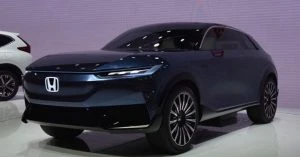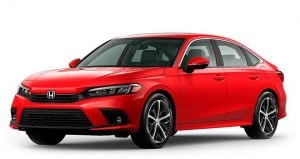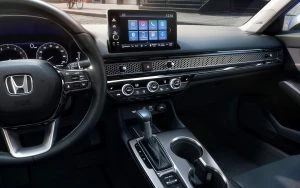Safety
Is it Time All Drivers Learn First Aid?
It’s a topic that rears its head every now and then, yet continually the issue has been overlooked by authorities.
We pay particular attention to the road toll, yet for some reason one of the efforts we could employ to mitigate this issue hasn’t warranted a national response. Why is first aid training not compulsory for every motorist, and should it be part of our licensing requirements?
When you put things into perspective, we spend a considerable amount of our lives driving from point A to point B. We may be lucky to escape accidents but the chances of seeing one, either take place or the result thereof, are far greater. And even though our cars have become a lot safer through technological innovation, poor driving habits and behaviours have crept into our society and created larger issues.

On that note, it’s time we also start to prepare drivers by training them to engage in reactive behaviour in the form of being a first responder. As it currently stands, the overwhelming majority of drivers and bystanders are ill equipped to administer first aid at an accident scene. In fact, in what should be viewed as a major concern, many wouldn’t even know where to begin. Even I know, that despite my former first aid training, it’s a moment you can never be entirely prepared for as shock sets in and time stands still.
Now let me clarify, bystanders and other motorists shouldn’t be expected to fill the void of professional emergency services personnel. However, in the event of an accident, every second matters. Early treatment can be the difference between life and death. And in the moments where emergency services personnel need to fight traffic to make it to the scene of an accident, those seconds are potentially ticking away.

Even in the absence of specific treatment, a bystander with composure to secure the scene, or calm the anxieties of those involved in the incident is an invaluable asset. These are specific elements to first aid training, which every motorist should be taught as part of their licensing requirements. Whereas drivers cover a gamut of issues concerning driving technique and etiquette, there is no reason why we shouldn’t all be equipped to administer first aid as a first responder in the event of an accident.
The course would be easy to include as part of our license tests, and it could also be renewed on a periodic basis along with our licenses. Several countries in Europe already adopt this approach, and if we want to keep up with the rest of the world, it’s time we start paying attention to the issues on our roads that really matter.
What Tyre do I Need?

Tyres are the most crucial component to any drive. Safety matters out there on the roads, and ensuring that you have a good set of tyres rolling beneath your car makes all the difference to aspects of driving like your stopping ability, road holding capacity and anti-aquaplaning.
What the heck is aquaplaning? You may have experienced aquaplaning already when driving on a wet road and in the rain where puddles have formed over the road. Hit these puddles at a reasonable speed, and the tyres can skid over the top of the puddles, causing complete loss of traction to whichever tyre is aquaplaning at the time. Aquaplaning and sliding in the wet can and unfortunately does cause accidents.
Obviously, slowing down in the wet helps lessen the chance of having an aquaplane experience. However, there are other aspects to the tyre which can affect how your tyres will cope with puddles and water on the road during wet driving conditions. The condition of the tyre, the tread pattern the tyre has, and the amount of tread depth left on the tyre all decide how your tyre will cope with wet road conditions. These three components combined with how fast your car is travelling are the main players to whether or not you’ll roll through the puddle, displacing the water, or skid over the top of the puddle in much the same way as a skim board does in the shallow water at the beach.
Tyres are the only element of a car that is in contact with the ground while driving. Choosing the right tyres can increase the entire performance of your vehicle. Every tyre has its strengths and weaknesses. Some tyres are long-lasting, while others offer better grip. Some tyres are designed to be quiet and smooth while driving, while others have a tread pattern designed for better fuel consumption. There are tyre testers out there like, Tyre Lab at www.thetyrelab.com, that single out tyres that perform best for all road conditions or for certain types of road conditions. However, it is a fairly well-known fact that the more you invest in a tyre, the better the tyre quality will be and, consequently, the safer your driving experience. That said, you might be surprised (or not) at which tyres are rated highly for braking, anti -aquaplaning and road holding by The Tyre Lab.
By law, in Australia the minimum tread depth for a tyre is 1.5 mm. When it’s raining, the tread is responsible for securing contact between the tyre and the road, effectively pushing the water out from under the tyre as it rolls along.
Need new tyres?
First, find out the specifications in size and type from your car’s manufacturer, and this is the best size to go for. You can also find out what kind of tyres you need, by looking on the side wall of your current tyres. You will see a combination of characters which look a bit like this: 215/55R17 94H. If your car has been mucked with, then make sure you check the manufacturer’s specs.
You will need to have an idea of how much you are going to spend at the tyre shop. Choosing between a premium tyre and value is not always easy, or maybe it’s just too easy. There are even budget tyres, which can be good if you aren’t into driving quickly, however, if you do go for these, they won’t have the best grip for all occasions and for emergency situations in the wet and dry.
Tyre choice really does come down to your own individual needs, the weather conditions and climate you’ll be driving in, how icy or cold the roads can get, how hot it is, and definitely how hard and fast you drive your car.
Not all tyres are the same. So, if you buy a premium tyre that is designed with performance ability and grip for extreme hard and fast driving, but you drive like a snail, you’ll be perfectly safe in all road conditions. If on the other hand you drive like a racing car driver, where you pass every other car in sight, and yet you are driving with budget tyres, your safety and the safety of others will be massively compromised.
There are those of us who drive within the law and try to maintain a decent speed in all road and weather conditions. We will try and slowdown in the wet for example. We all need to be driving safely, yet it does help to know just what sort of tyres are on the car you drive and what they are capable of out there on the road. Just as equally-valid is knowing just what your tyres are not capable of. There is nothing worse than losing traction or have a tyre’s integrity let go in a life threatening situation.
Every journey is dependent on the performance of your tyres and their effect on your driving. Tyres impact on your steering, acceleration, handling, and braking. They’re also a key part of your car’s suspension and braking systems. If you don’t have the right tyres for your car, tyres that are legal and in good shape, you’re putting yourself, your passengers and other road users at risk.
Budget tyres versus Premium tyres
Even though all tyres look pretty much the same, the difference between a budget tyre and a quality tyre is huge. It comes down to the fact that the quality of the materials used in creating a premium tyre just can’t be replicated in a cheaply-made tyre.
Premium tyres have to meet high standards and are therefore made with more steel and specially formulated rubber and silica compounds. These high quality tyre materials ensure that the final product is much stronger, longer-lasting, and one that offers better grip than a cheap tyre option.
Premium tyre manufacturers focus on research and development, and often they will be linked with the motorsport world where competition in tyres really matters. Years of testing has proven that premium tyres do perform better and more consistently than a cheaper tyre alternative.
Premium tyres generally include names like: Dunlop, Michelin, Pirelli, Bridgestone, Kumho, Hankook and Continental. Manufacturers of quality tyres will achieve higher standards than a budget or value tyre in all aspects of a tyre’s job prescription. This will include: good grip for all driving conditions, exceptional wet and dry braking, superior handling at any speed, a higher impact damage threshold, better load-carrying capability, a longer service life (unless, of course, they are track racing tyres with a super-soft compound for ultimate grip on the track), better fuel economy, improved driving comfort; reduced noise, vibration and harshness.
We hope this was helpful.
Honda’s Latest

As with many other automotive manufacturers, Honda is on the hunt for having its fleet become fully electrified. Honda’s vision is to have 100% of its new vehicles with zero emissions by 2040. There are some neat EV models in the pipeline, but also some vehicles that help transition the gap from petrol to hybrid to 100% electric. Honda’s 2022 Civic models are set to be enjoyable.
Honda recently announced that their Prologue SUV, which will be Honda’s first new EV sold in big volume, will be a battery-electric vehicle (BEV) that will go on sale in 2024. It is likely that the Prologue SUV will be an American-only seller first, so how that fits in with Australia remains to be seen. As EV infrastructure expands, and customer interest grows nationwide and globally, the company will expand sales and marketing efforts accordingly. Following the launch of the Honda Prologue, the company will create additional EVs based on the new e-Architecture that is currently being developed and customer demand.

Honda Prologue SUV
Honda has a long history of being a leader in creating hybrid and electrified vehicles. Honda’s Insight still is a very good example of how a hybrid should perform, and it remains a strong seller with people who are looking for low emissions and frugality in fuel usage. As Honda prepares for the launch of the Honda Prologue for America, the company will introduce hybrid-electric systems to other core models to continue to reduce CO2 emissions while helping create a bridge for customers to move from fossil fuels to hybrid to EVs.
Honda’s management have stated that they are aware that customers who have a good experience with a hybrid vehicle are more likely to buy an electric vehicle in the future. We can see that their hybrid sales have increased over the last few years. Led by models such as the CR-V Hybrid and the Accord Hybrid, Honda just recorded its best-ever first-half year of electrified vehicle sales. The Insight has also sold well.

2022 Honda Civic Sedan
Now what about now? Let’s take a look at the all-new Honda Civic Hatchback! In 2022, Honda will be selling the latest Civic in Australia. The car is aimed predominantly at young buyers who are captured by its fastback design and sporty driving character. The new Civic will offer a slick-shifting 6-speed manual transmission as well as an automatic CVT option to go with the 2.0-liter normally aspirated motor or the 1.5-liter turbo engine. High-performance Si and Type R models are to be available, and they are cars I’ll be keeping my eyes out for.
The largest back seat to ever be inside a Civic Hatchback comes with 2022 models, and the cars also features new standards of safety technologies. All 2022 Honda Civic Hatchbacks include Honda’s new next-gen driver and front passenger airbags and an expanded Honda Sensing suite of driver-assistive and safety technology that adds Traffic Jam Assist and a smoother, more natural feeling to functions like Adaptive Cruise Control (ACC) and the Lane Keeping Assist System (LKAS). It will also include Collision Mitigation Braking System (CMBS) with Pedestrian Detection, Forward Collision Warning, and Road Departure Mitigation (RDM).

2022 Honda Civic Dash
2022 Honda Civic EX-L models will boast all the luxury features, so big color touchscreen with Apple CarPlay and Android Auto integration, push-button start, partial digital instrumentation, blind-spot information (BSI), leather upholstery, an 8-way power driver’s seat, heated front seats, heated outside mirrors, a one-touch power sliding moonroof, dual-zone automatic climate control and LED headlights are the go.
Sportier Civics will have racy looks thanks to things like a short shifting 6-speed manual transmission (or CVT), Berlina Black 18-inch wheels, low-profile 235/40R-18 tyres, black exterior accents, an 8-speaker audio system, sport-specific upholstery, a leather-wrapped shifter and steering wheel, paddle shifters (CVT only) and sport pedals.
As the automaker prepares for the launch of the Prologue SUV in America, expect to see more hybrid variants of current core models to ease the transition to full electrification.
The Things We Do in Our Cars

I was thinking about the different demands that we all put our vehicle through on our daily drives throughout a year. It got me thinking about all the changes that can happen to us inside 12 months – whether the weather seasons change dramatically, families get larger or smaller, job promotions happen, we can change jobs for whatever reason, building renovations happen, moving house occurs, we make new friends, we start a fitness schedule at the gym, we try out a new sport across town, go fishing, go for that caravan trip around Australia and what not… Our lives are fun and full of regular tasks that we both love or put up with, have jobs that we stick with or change, are full of people that come and go and people that we just love to be around and who will always be a part of our life. The cars we drive regularly, are often a reflection of our lifestyle and can tell us a story about who we are and where we are in life.
With this ticking through my thought processing, I started to think about the changes that may or may not happen to our cars as we drive them, and how the lifestyle changes and choices that we make can affect the cars we drive. In essence, a car is a very adaptable machine (or at least should be), and it has to be fit for purpose to cater to our own individual needs. Often, I find myself needing to hitch up the trailer to grab some more compost for the garden, take a load to the recycling centre or help out a mate who is shifting house. I like to make use of my drive into town to charge my mobile phone up on the way and listen to my favourite music with the volume wound right up. Some days the temperature outside can get so cold in wintertime that I need to wind up the heater in order to thaw my fingers out and demist the rear window. But then in summer, when the temperatures soar, I’ll have the air-conditioning wound up to maximum to keep the family inside the car nice and cool, particularly when we have the tiny grandchild travelling with us.
We have different drives that we frequently make in a month, and they all take different roads and cover varying landscapes. Some journeys require us to drive up steep streets to get us to our friend’s house on top of the cliffs overlooking the sea, other roads have us in the middle of congested city streets and then another drive may take us for an hour or two north into the wild blue yonder through flat and undulating scenery to visit family.
We’ve learned to trust our cars to get us from A-to-B whatever the weather, whoever we have onboard, whatever we have to tow or carry. Can a new EV manage all the lifestyle changes and demands dependably? I’d hate to be late for my daughter’s graduation because my EV ran out of power halfway there, or that I missed the ferry because the EV had to be topped up at a charging point that had a long queue, and what about the police who aborted a chase after a dangerous criminal because he spent too long with the heater on and the siren going at the same time.
We need a car fit for purpose, a car that is cheap to run, nice to the environment and above all dependable!